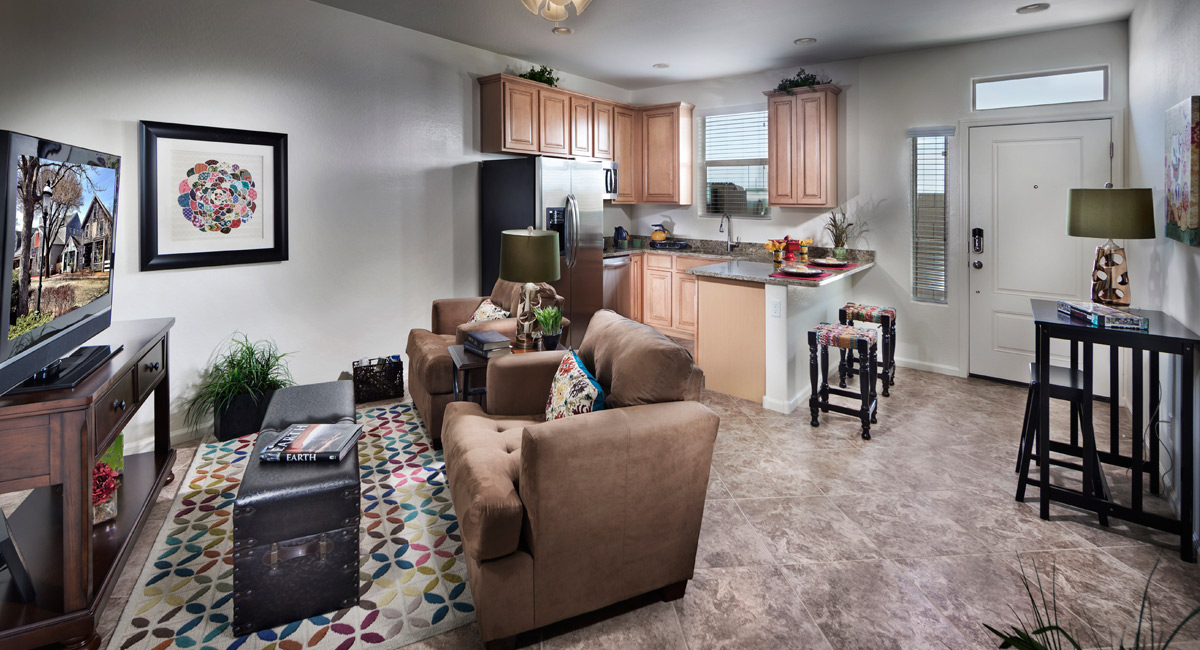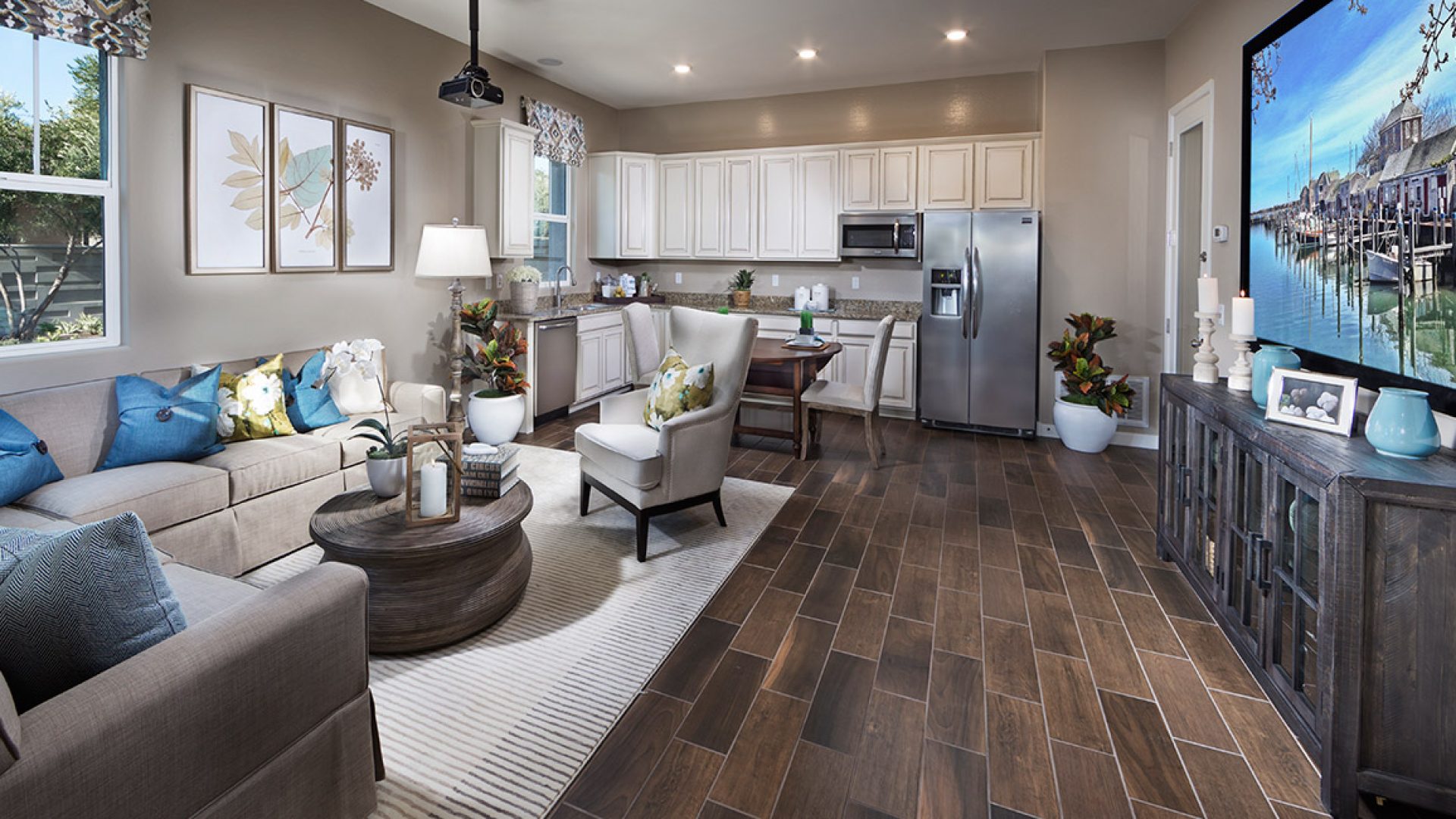If there comes a time in your life that you need to upsize your residential living space because your family has or inevitably will outgrow your current dwelling, a Lennar home is the ideal move-up property. Lennar is the country’s first production homebuilder to offer a home specifically designed to accommodate multigenerational occupants. Imagine two homes under one roof – a balance in privacy and togetherness, independence and accessible help; Lennar’s multigenerational homes allows large families to live together without the sacrifice of personal space and comfort.
Could a new home meet your residential needs? If so, how do you know if (or when) you are ready to buy a new home? Purchasing a home necessitates a two-part strategy: One part life and one part financial. Let’s go over the benefits of owning a multigenerational home and examine some key considerations in undertaking this investment.
Life Strategy
Purchasing a home requires a long-term commitment. Homeowners are advised to live in a new home for a minimum of three to five years before they turn around and sell; however, it can take at least five years to break even on the market and seven years to see a profit, considering the money one spends on a newly-procured property (e.g., closing costs, mortgage payments, maintenance and renovation expenses). If you do not envision yourself staying put in a new home for an extended length of time, you may want to consider your own vs. rent options on a residential space until you decide the driving factors – career, location, family size, and cost, to name a few; but, life has a funny way of throwing us curve balls that strike out our near-perfect plans.

Imagine the following scenario: Your father-in-law can no longer live independently and needs looking after, but a facility for assisted living costs too much, and there is simply no room for him in your small family home that currently tends to you, your spouse, your children, and maybe one or two pets. What can you do to see he is properly cared for? Another situation: Your daughter has special needs that prevent her from venturing out on her own, but you still want her to lead a life that is semi-independent. How do you grant her freedom, but keep her close to home? Or maybe you are a self-starting business owner who desires to work from home rather than rent an office space; at the same time though, you want to conduct your enterprise in peace, cancel out any noise your family can muster to disturb you or visiting clients. How do you achieve this without operating out of the garage?

Besides offering an opportunity to share one’s home with those one cares about, The Home Within a Home can afford homeowners various financial and logistical benefits. The design concept of two homes under one roof allows for a shared mortgage and combined utility bills; you will never have to pay two monthly statements for insurance, taxes, electricity, water, cable, and the like because each source of debt will have one levied sum for the entire edifice. In the same manner, maintenance fees and yard care costs will be feasible because you are maintaining a single property. With your family member(s) living closer than next door to you, you save money on transportation – no more plane tickets or gas mileage; furthermore, if the grandparents live under your roof, your child(ren) no longer need(s) a hired babysitter. Lastly, the resale appeal on a multigenerational home is rising with the growing populace of America; if you decide to move up into another home, you may receive a substantial financial return on the market for your Home Within a Home.
Financial Strategy
Once you are confident that life deems you fit for homeownership, your initial consideration in the home-buying process is affordability. How much home can you afford? Offhand, you may not know, but to help you discover the answer, I have broken down the financial strategy of the home-purchasing process into three necessary topics of discussion: Debt, Savings, and Credit.
Part 1 – Understand Your Standing Forms of Debt
Whether you are a first-time homebuyer or an experienced homeowner, you need to ask yourself, “Do my current financial commitments prevent me from procuring a new home?” The initial investigation of your fiscal stability begins with the calculation of your debt-to-income (DTI) ratio to discover what portion of your gross income covers housing costs and other forms of debt, such as car payments, credit card balances, or child support. An online affordability calculator can help you calculate your DTI ratio.
A mortgage is perhaps the largest fiscal obligation you can assume, and if you are presently a homeowner with an unpaid mortgage, you need to uncover your current mortgage payoff if you plan to sell your old home. Your mortgage payoff is different from your mortgage balance; the payoff statement you receive from your loan officer will disclose the standing loan balance, in addition to incurred fees and any interest you may owe up to the day you pay off the loan. Share this value with your real estate listing agent so that you both know how much your home needs to sell for to satisfy the unsettled mortgage balance. Once your old mortgage is paid off, any capital left over from your home’s resale value goes in your pocket or toward the down payment on your new home.

Part 2 – Start Saving, If You Haven’t Already
As with most sizable investments – a home being one of the grandest, you need to save money. Lenders will review your bank statements for available funds to cover a down payment and successive monthly mortgage dues; they will also note routine saving activity and/or any accounts of overdraw. Essentially, the loan officer is assessing how well you manage your money to determine the level of risk associated with extending you a loan.
In the pursuit of buying a new home, you may consider maintaining two separate savings accounts. The first is reserved for the down payment on your next residential living space; if you wish to avoid higher interest rates on your monthly mortgage fees and the purchase of private mortgage insurance (PMI), be sure to set aside enough capital to secure 20% equity. The second account serves as an emergency fund for surprise home maintenance fees, moving expenses, utilities, homeowners association (HOA) fees, property taxes, and insurance; no one can predict the future, so setting up a fiscal defense against unexpected forms of debt is prudent.
For more information, see the following:
How to Budget for Your New Home (Before You Live There)
Part 3 – Improve Your Credit Score
Your credit report reveals your credit score – a three-digit number ranging from 300 to 850 that tells a lender your creditworthiness. Your credit report provides a thorough documentation of your credit history, including paid and unpaid debts, bankruptcies, liens, civil judgements, and collections, allowing your loan officer to conjecture how likely it is that you will pay back the money you owe them, based on these chronicled accounts of your past borrowing behavior. A free copy of your credit report is available to you at Annual Credit Report online.
Lennar’s The Home Within a Home® is a solution built for big families that wish to happily live together under one roof without compromising their comforts, privacy, and independent living. More than that though, tThe Home Within a Home suite is available to you to use as guest quarters, an office, a home-schooling space, a studio, or personal gym; finally, your home can conform to your altering life circumstances. For more information on The Home Within a Home and a chance to read the stories of current homeowners, click here.




